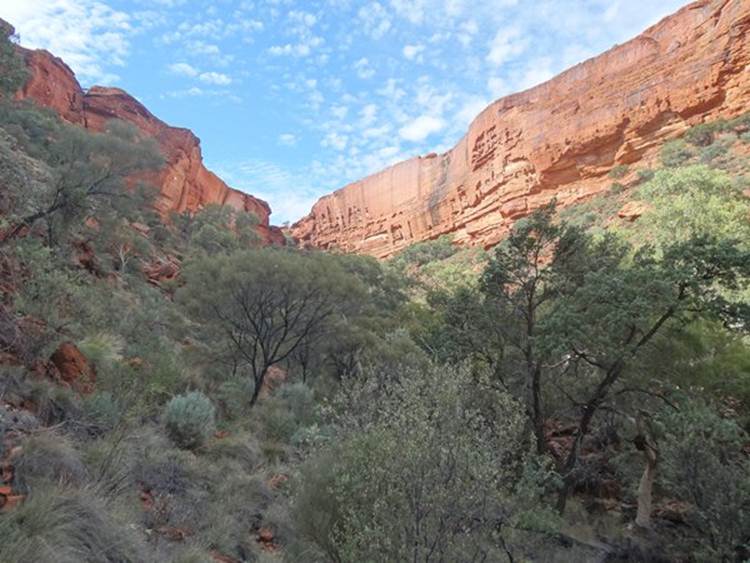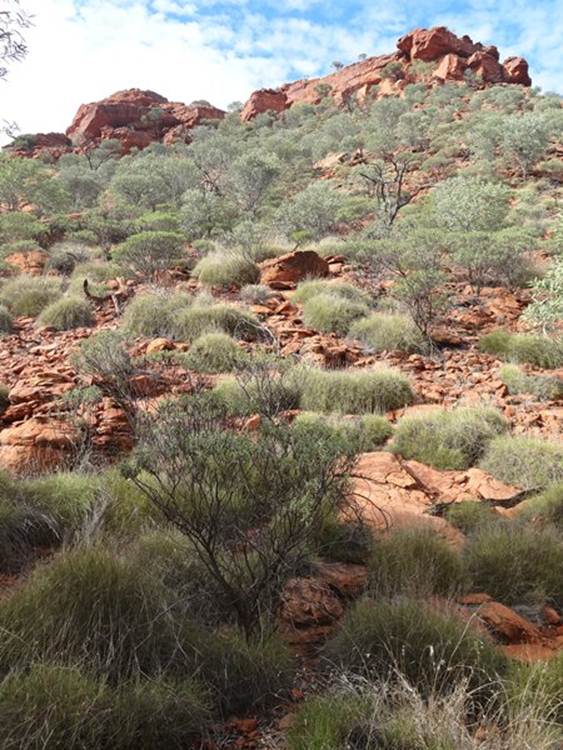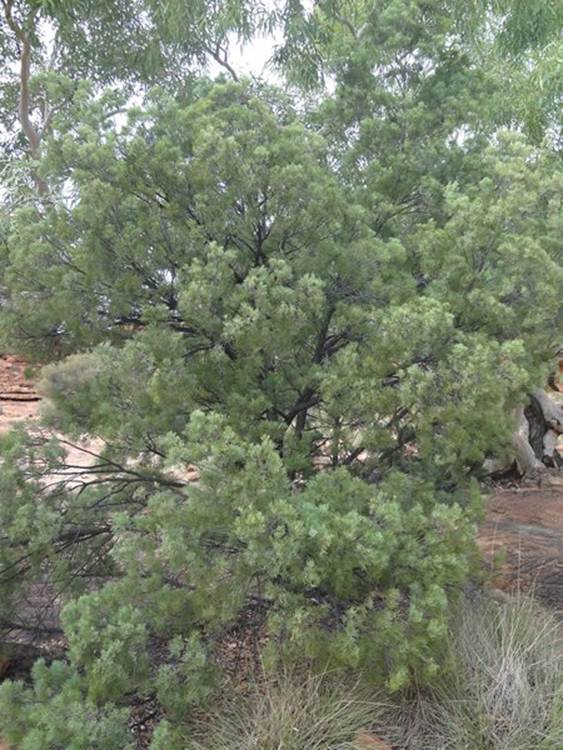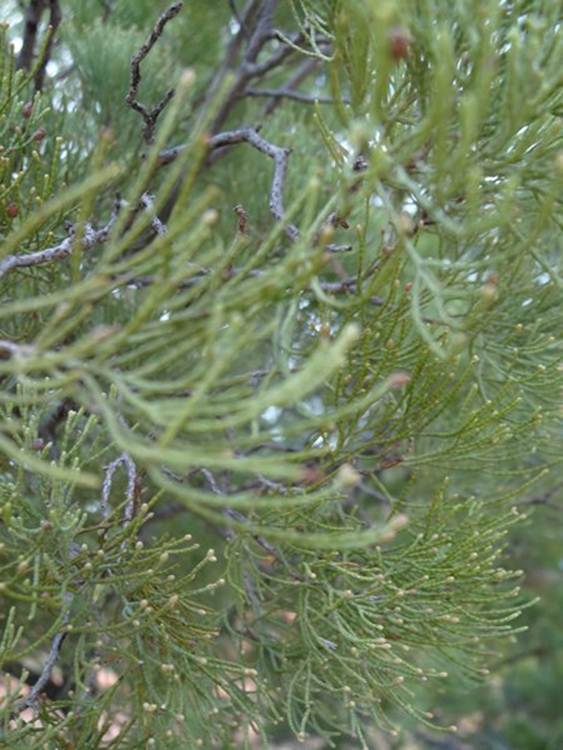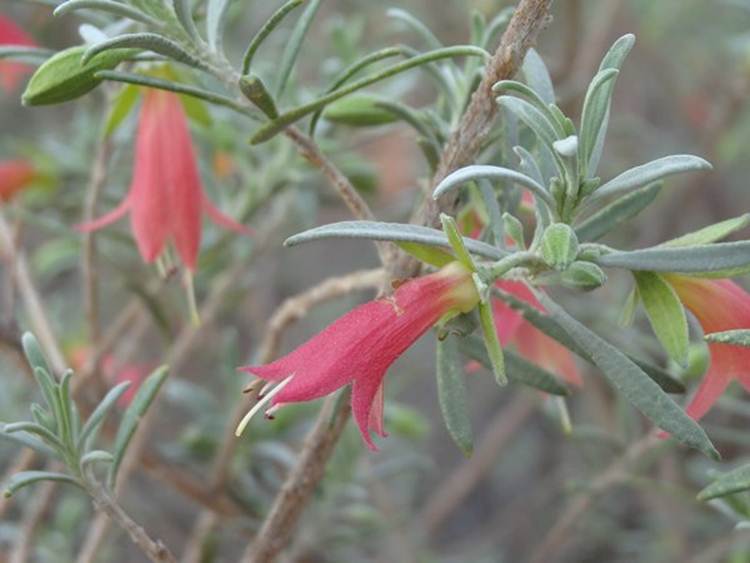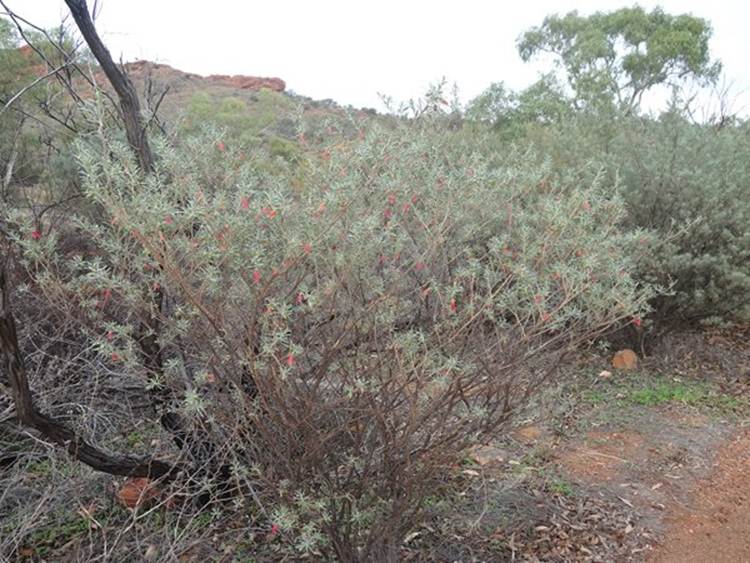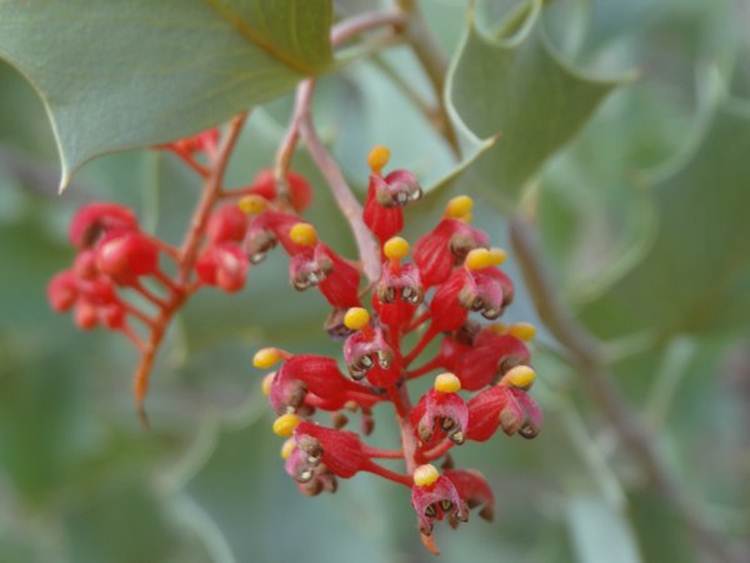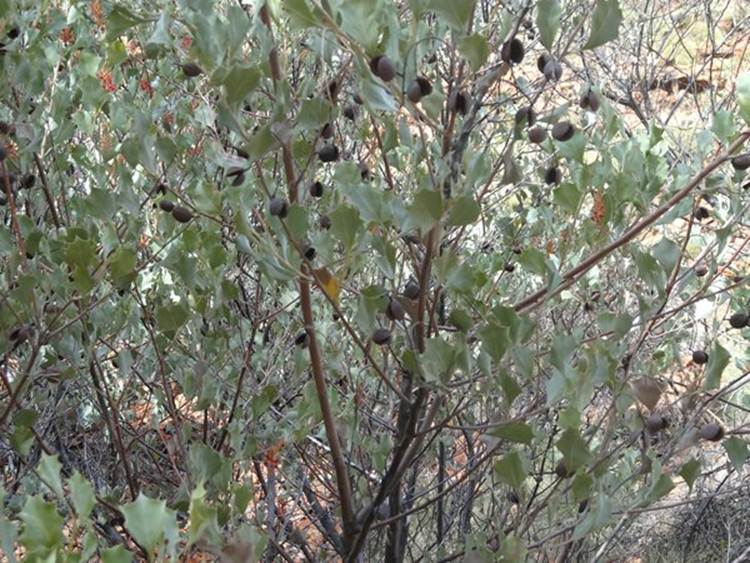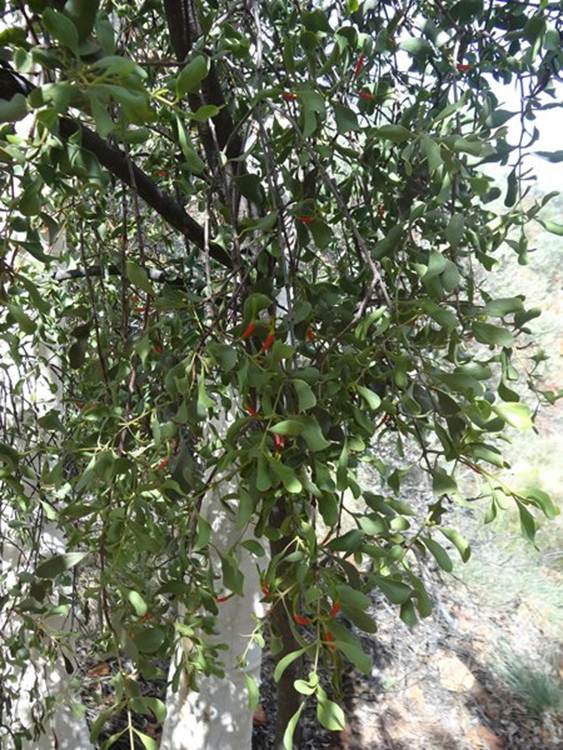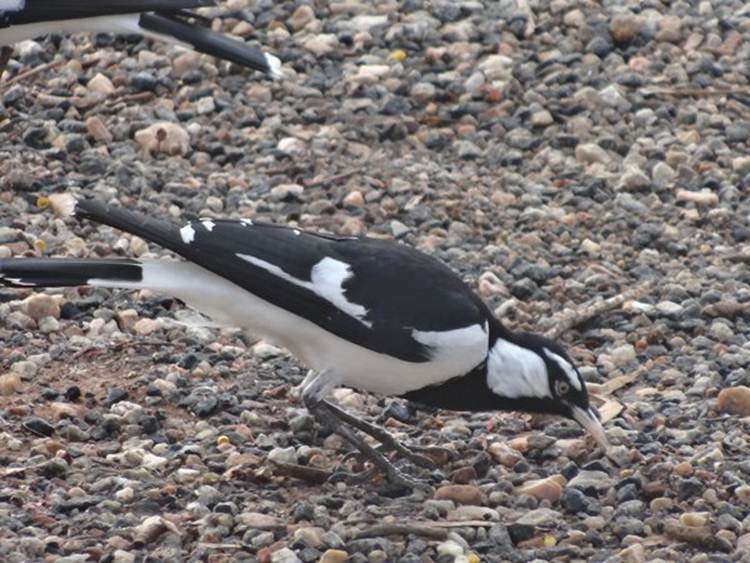Kings Canyon Creek Walk

There are three major habitats at Kings Canyon: moist cracks and gullies; dry rocky range; and the sandy bed of the creeks. The walk went along the creek bed where the biggest trees are found. The sand holds water long after the rain has stopped falling. 25,000 years ago there were large rivers and lakes in this area, now shrunken to sandy creek beds and the salt lakes that abound in the area. However, within gorges like Kings Canyon fairly lush conditions persist. The biggest trees occur along the sandy creek bed. The sand holds water long after the rain has stopped falling.
Look up…
More white cypress pines (Calltris glaucophylla). These are fire resistant and grow in rocky areas offering protection from bushfires. Their wood is termite resistant and was widely used in the early colonial days for stockyards and fences.
Those really narrow leaves again.
One of those Eremophila (might be crimson turkey bush) we saw in Adelaide.
A holly grevilleas (Grevillea spp. – my flower key has two species and neither are this one) in flower at the moment. Loads of them lined the banks where they survive on the remnants of rainfall under the open canopy of the larger trees. You can tell where it got its name from, the leaves are tough and spikey, they also grow on the rocks slope.
Seed pods of the holly grevillea.
Misltoe growing on gum tree.
The magpie lark (Grallina cyanoleuca). Pretty little bird, as it walks its head moves back and forth in time with its feet giving it a characteristic walk
|
